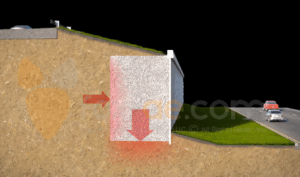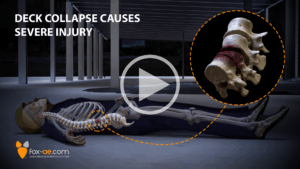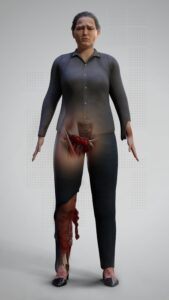Legal animation has become a game-changer in presenting complex scenarios in courtrooms. Whether it’s a car accident, medical malpractice case, or intellectual property dispute, visualizing key events can help jurors understand intricate details. But for legal animation to be truly effective, it’s essential to apply cognitive principles that align with how humans learn and process information. Mayer and Moreno’s Cognitive Principles of Multimedia Learning (2003) provide a framework that can significantly improve the design of legal animations, specifically through the Modality Principle and Contiguity Principle.
Applying the Modality Principle in Legal Animations
Legal animation typically combines visuals and verbal explanations. The Modality Principle suggests that people process spoken words and images using separate channels, which means that narration is more effective than on-screen text in explaining visual content. In legal cases, this means that when presenting an animation of an accident or event, the key information should be delivered through spoken narration rather than written text on the screen.
Example: In a case where a car is shown swerving to avoid an obstacle, a verbal explanation such as, “The vehicle was traveling at 60 miles per hour when it swerved to the right” will ensure the jurors can follow the animation without being distracted by the text. The image and narration complement each other, reducing cognitive overload.
Why It Works:
- Verbal and visual information are processed separately, meaning narration doesn’t compete with images for the same cognitive resources.
- Using spoken narration ensures jurors can focus entirely on the visuals without dividing attention between reading and watching.
The Contiguity Principle in Legal Animations
The Contiguity Principle is divided into two components: spatial contiguity and temporal contiguity. These principles suggest that related visual and verbal information should be presented together in space (proximity) or time (synchronization) to help the brain integrate the information more efficiently.
- Spatial Contiguity: For legal animations, any textual or labeling information should be placed near the corresponding object in the animation. This makes it easier for jurors to connect the visuals with the information. Example: In an animation of a crime scene, the location of crucial evidence (e.g., a weapon) should be labeled directly in the animation frame to avoid confusion.
- Temporal Contiguity: This principle stresses that visuals and narration should appear at the same time. In legal animations, the spoken explanation should correspond directly with the actions on screen. Example: If an animation shows a pedestrian being hit by a car, the narration should explain the event at the same time it is depicted, such as, “The pedestrian steps into the crosswalk just as the car approaches, causing the driver to brake suddenly.”
Why It Works:
- Spatial and temporal proximity reduces the cognitive load to link related information mentally.
- It improves clarity and helps the viewer follow the sequence of events without adjusting or pausing mentally.
Conclusion
Legal animations, when designed with the Modality Principle and Contiguity Principle in mind, effectively communicate complex information in courtrooms. By reducing cognitive overload and helping jurors process information more efficiently, these principles ensure that the animation is not a distraction but a powerful tool in presenting evidence clearly and persuasively. Adopting these cognitive principles can make the difference between an animation that confuses and one that enhances understanding, ultimately making legal presentations more impactful.
Moreno, R., & Mayer, R. E. (2000). Cognitive principles of multimedia learning: The role of modality and contiguity. Journal of Educational Psychology, 92(1), 117–125.





